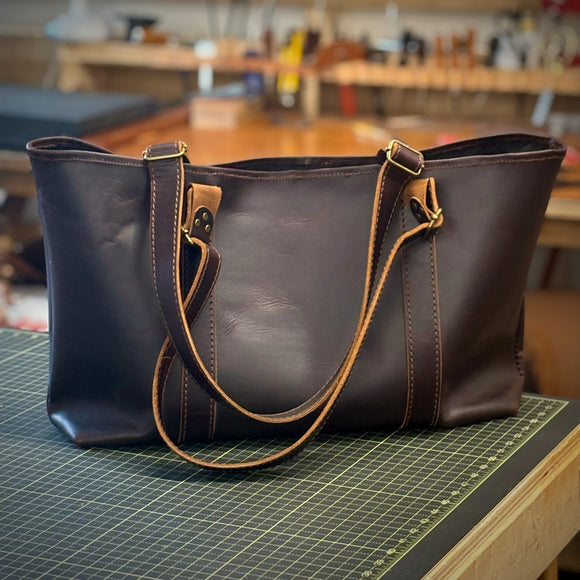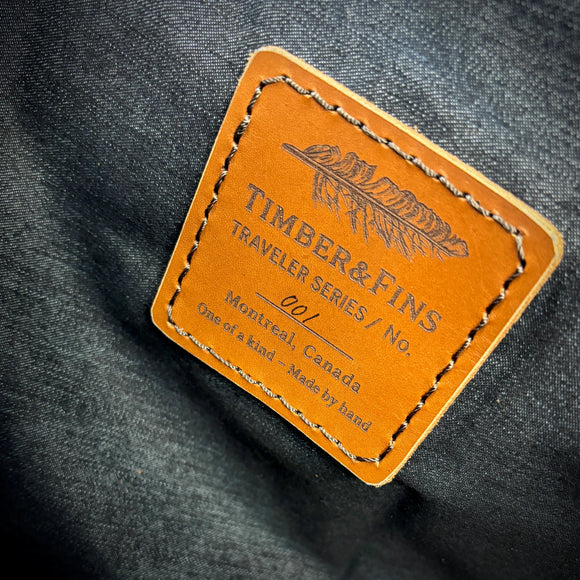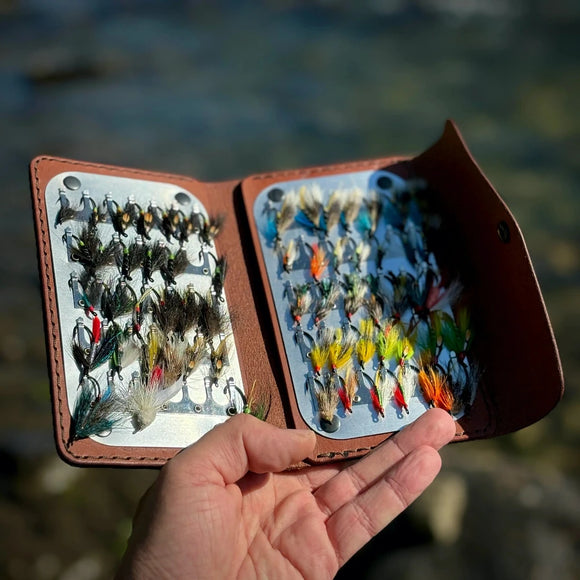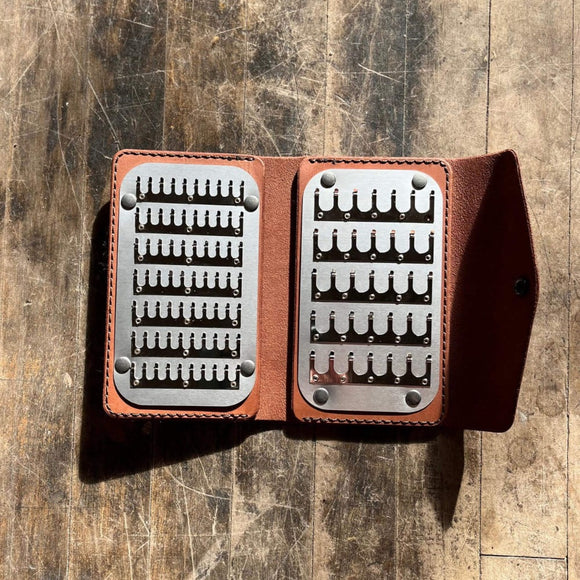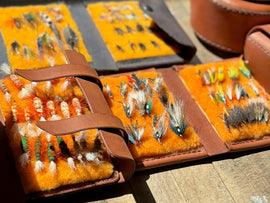J'ai récemment eu le plaisir de discuter avec un fabricant de cannes en bambou incroyablement talentueux, dont le travail allie art et héritage de la pêche à la mouche. Dans cette interview, nous explorons son parcours dans la fabrication de cannes, les subtilités du bambou en tant que matériau et ce qui distingue ces cannes dans un monde d'alternatives modernes. Nous espérons que vous apprécierez ces perspectives autant que moi.
Qu'est-ce qui vous a inspiré à commencer à fabriquer des cannes en bambou ? Y a-t-il eu un moment ou une influence spécifique qui vous a conduit sur cette voie ?
Je pêche depuis que je suis très jeune, grâce à mon père et à son ami proche, Michael, qui pêchait régulièrement à la mouche. Michael possédait une collection de cannes à mouche en bambou fendu, toujours suspendues sur un support à mi-hauteur de son escalier, prêtes à être utilisées à tout moment. Il me parlait souvent du processus magique de fabrication de ces cannes, des efforts approfondis que les fabricants déploient, cherchant la perfection. Bien qu'il n'y ait pas eu un moment précis qui m'ait mis sur cette voie, l'influence a toujours été présente.
Qu'est-ce qui fait du bambou un matériau si spécial pour fabriquer des cannes ?
Le bambou est un matériau incroyablement solide, naturel, à croissance rapide et durable. J'ai d'abord remarqué sa résistance lors de mes voyages en Asie du Sud-Est, où des échafaudages en bambou étaient utilisés même sur des gratte-ciel. Je regardais avec émerveillement alors qu'il se balançait doucement dans la brise. En ce qui concerne la fabrication de cannes, le bambou possède des propriétés d'auto-charge et la capacité de stocker de l'énergie, qui, lorsqu'elle est libérée lors du lancer, permet une livraison précise et délicate de la mouche, parfaite pour diverses situations de pêche.
Pouvez-vous nous expliquer le processus de fabrication d'une canne en bambou du début à la fin ? Quelles sont les étapes les plus difficiles et les plus gratifiantes ?
Une fois que je connais le type de canne que je fabrique, le processus commence par la division du chaume de bambou en bandes de taille égale, d'où le terme « split cane ». Chaque bande est rabotée à un angle de 60 degrés et six de ces bandes sont liées ensemble pour former un blank hexagonal. Les bandes sont ensuite cuites dans un four pour éliminer l'humidité et durcir le bambou. Après cela, le cône est appliqué à l'aide de formes de rabotage, qui permettent de raboter le bambou de l'épais au fin, créant ainsi le profil de la canne de la base à la pointe.

Une fois que le blank est collé et durci, la poignée, le porte-moulinet et les ligatures sont fixés. Ensuite, on enroule les ligatures sur les anneaux et on applique une finition, comme du vernis. Bien que cela semble simple, le processus est incroyablement détaillé. Pour ceux qui souhaitent en savoir plus, je recommande "A Master’s Guide to Building a Bamboo Fly Rod" d'Everett Garrison et Hoagy B. Carmichael.

En quoi une canne en bambou diffère-t-elle en sensation et en performance par rapport aux matériaux modernes comme le graphite ou la fibre de verre ?
Le bambou est un matériau naturel et, comme toutes les choses naturelles, il a ses particularités et ses légères imperfections. Aucun deux cannes ne sont identiques et pour certains pêcheurs, c'est là que réside la beauté. La sensation du bambou est différente — chaque canne a une personnalité unique, et le retour que vous obtenez lors du lancer ou du combat avec un poisson est beaucoup plus intime comparé à la fibre de verre ou au graphite.
Pourquoi les cannes en bambou continuent-elles d'avoir un public fidèle malgré la prévalence des technologies modernes de cannes ?
Une raison est sa connexion au monde naturel. L'idée que quelque chose cultivé dans une forêt puisse être transformé en un outil de pêche beau et fonctionnel qui rivalise avec les matériaux modernes porte une certaine mystique.
Quelles sont certaines idées fausses que les gens pourraient avoir à propos des cannes en bambou ?
Une idée reçue courante est que les cannes en bambou ne sont pas assez solides. Mais si l'on regarde l'histoire, les pêcheurs attrapaient des poissons énormes avec des cannes en bambou bien avant l'apparition des matériaux modernes. La solidité est là, elle se présente simplement sous une forme plus naturelle.
Combien de temps faut-il pour fabriquer une seule canne en bambou et quelle partie de ce processus est réalisée à la main ?
Il me faut généralement entre 60 et 80 heures pour fabriquer une canne, en fonction du bambou et des défis spécifiques qu'il présente. Le processus est presque exclusivement fait à la main. J'ai construit un tour de fortune pour tourner les poignées des cannes, mais sinon, tout est fait à la main. Je fabrique généralement seulement quelques cannes chaque année et je trouve qu'il est préférable d'en faire deux ou trois du même modèle à la fois.

Comment approvisionnez-vous votre bambou et son origine affecte-t-elle la performance de la canne ?
Je me procure mon bambou sur anglersbamboo.com à Livingston, MT. Ils se rendent en Chine pour sélectionner à la main les meilleures tiges de bambou de Tonkin, qui contiennent une forte proportion de fibres puissantes et une résistance naturelle aux insectes et à la moisissure. Il est parfait pour une utilisation en extérieur et idéal pour la fabrication de cannes.
Avez-vous des histoires ou des expériences mémorables qui ont façonné votre approche de la fabrication de cannes au fil des ans ?
La beauté de la pêche réside dans le fait que nous recueillons des histoires en chemin. Je me souviendrai toujours de la première fois où j'ai noué une mouche et attrapé un poisson avec — cela m'a semblé être un immense accomplissement. Attraper mon premier poisson avec une canne en bambou a été un autre moment culminant. Aujourd'hui, je prends un immense plaisir à entendre les histoires des personnes qui pêchent avec des cannes que j'ai fabriquées. Leurs retours façonnent mon travail et m'aident à m'améliorer continuellement.
Comment voyez-vous l'avenir de la fabrication de cannes en bambou ?
Je pense que l'avenir s'annonce prometteur. De nombreux créateurs présentent leur travail sur les réseaux sociaux et beaucoup de pêcheurs partagent encore leurs prises avec des cannes en bambou. C'est une niche dans une niche, mais c'est une niche qui continue d'inspirer et de captiver.

Y a-t-il des designs ou des innovations particuliers que vous êtes impatient d'explorer dans les futures cannes ?
C'est une période passionnante pour les cannes en bambou. Les profils contemporains évoluent pour suivre le rythme des lignes modernes et j'ai récemment acquis une ligne en soie de style Scandi pour l'une de mes cannes Spey — c'est incroyable de voir des matériaux traditionnels adaptés aux techniques modernes. À mesure que les lignes changent, les cannes aussi évolueront.
À quoi ressemble votre journée idéale lorsque vous pêchez avec une canne en bambou ?
Ma passion est de lancer des mouches avec une canne Spey à deux mains. Marcher dans un courant avec une canne Spey en bambou, regarder la mouche glisser à la surface — c'est idyllique pour moi. De plus en plus, cependant, simplement regarder un client ou un ami pêcher au bambou me met en paix et me fait sourire.
Existe-t-il un type spécifique de poisson ou de condition d'eau où les cannes en bambou excellent par rapport aux cannes modernes ?
Le bambou excelle lorsque vous attrapez un poisson qui secoue vraiment la tête. Les fibres naturelles du bambou semblent absorber ces mouvements violents sans effort et vous ressentez chaque secousse transmise à travers la canne, directement jusqu'à votre paume.
Cette conversation a été tellement inspirante—merci encore de partager vos idées et votre passion pour la fabrication de cannes en bambou avec nous ! Si quelqu'un souhaite en savoir plus ou contacter directement Edward Few, le meilleur moyen de le joindre est via son Instagram : @bamboofew.
Produits en vedette
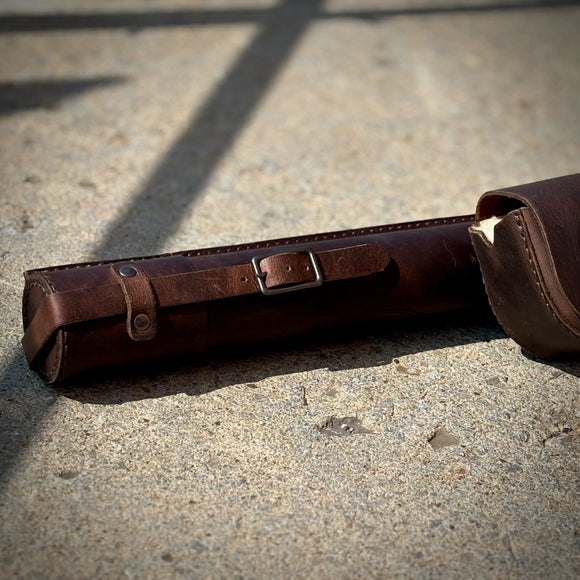
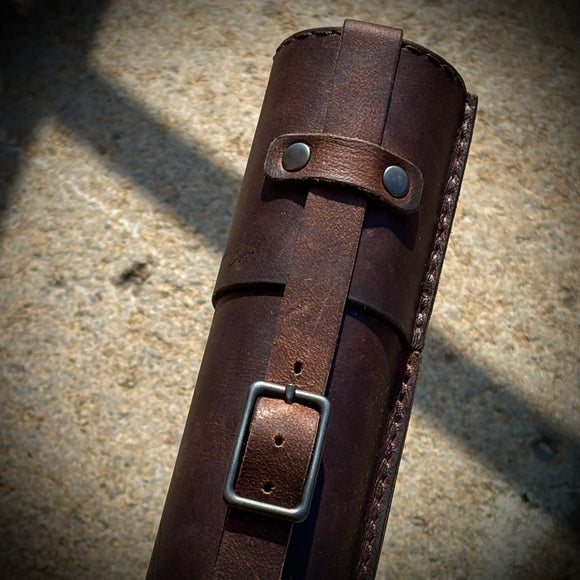
Tube en cuir pour canne


